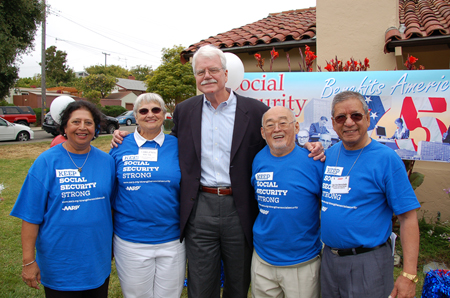| << Chapter < Page | Chapter >> Page > |
Statisticians use data to calculate the median age of a population, that is, the number that marks the halfway point in a group’s age range. In the United States, the median age is about forty (U.S. Census Bureau 2010). That means that about half of the people in the United States are under forty and about half are over forty. This median age has been increasing, which indicates the population as a whole is growing older.
A cohort is a group of people who share a statistical or demographic trait. People belonging to the same age cohort were born in the same time frame. Understanding a population’s age composition can point to certain social and cultural factors and help governments and societies plan for future social and economic challenges.
Sociological studies on aging might help explain the difference between Native American age cohorts and the general population. While Native American societies have a strong tradition of revering their elders, they also have a lower life expectancy because of lack of access to healthcare and high levels of mercury in fish, which is a traditional part of their diet.
In the United States, all people over eighteen years old are considered adults, but there is a large difference between a person who is twenty-one years old and a person who is forty-five years old. More specific breakdowns, such as “young adult” and “middle-aged adult,” are helpful. In the same way, groupings are helpful in understanding the elderly. The elderly are often lumped together to include everyone over the age of sixty-five. But a sixty-five-year-old’s experience of life is much different from a ninety-year-old’s.
The United States’ older adult population can be divided into three life-stage subgroups: the young-old (approximately sixty-five to seventy-four years old), the middle-old (ages seventy-five to eighty-four years old), and the old-old (over age eighty-five). Today’s young-old age group is generally happier, healthier, and financially better off than the young-old of previous generations. In the United States, people are better able to prepare for aging because resources are more widely available.
Also, many people are making proactive quality-of-life decisions about their old age while they are still young. In the past, family members made care decisions when an elderly person reached a health crisis, often leaving the elderly person with little choice about what would happen. The elderly are now able to choose housing, for example, that allows them some independence while still providing care when it is needed. Living wills, retirement planning, and medical power of attorney are other concerns that are increasingly handled in advance.

What does it mean to be elderly? Some define it as an issue of physical health, while others simply define it by chronological age. The U.S. government, for example, typically classifies people aged sixty-five years old as elderly, at which point citizens are eligible for federal benefits such as Social Security and Medicare. The World Health Organization has no standard, other than noting that sixty-five years old is the commonly accepted definition in most core nations, but it suggests a cut-off somewhere between fifty and fifty-five years old for semi-peripheral nations, such as those in Africa (World Health Organization 2012). AARP (formerly the American Association of Retired Persons) cites fifty as the eligible age of membership. It is interesting to note AARP’s name change; by taking the word “retired” out of its name, the organization can broaden its base to any older people in the United States, not just retirees. This is especially important now that many people are working to age seventy and beyond.

Notification Switch
Would you like to follow the 'Introduction to sociology 2e' conversation and receive update notifications?